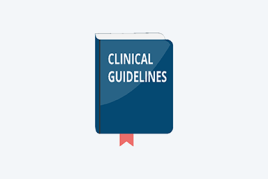Indoor tanning
Indoor tanning use
The global prevalence of indoor tanning in adolescents for 2013-2018 was 6.5%, and 10.4% in adults. (1)
Though the numbers have been decreasing in recent years, approximately 7.8 million adults in the U.S. still engage in indoor tanning. (2,3)
Among high school students in the U.S., tanning has declined in recent years, but has not stopped entirely. (4)
In 2019, 8.4% of white female high school students have tanned indoors. (1,5)
Indoor tanning has decreased significantly among female high school students since 2013. Many states have enacted policies to control the indoor tanning industry, and some are restricting minors’ access to indoor tanning facilities. (6)
Though indoor tanning in U.S. adults has declined in recent years, according to 2018 data, about a quarter of those who report any indoor tanning, tanned 25 times or more in one year. (7)
Risks of indoor tanning
The United States Department of Health and Human Services and the World Health Organization's International Agency of Research on Cancer panel have declared ultraviolet radiation from the sun and artificial sources, such as tanning beds and sun lamps, to be a known carcinogen (cancer-causing substance). (8,9)
Research indicates that UV light from the sun and tanning beds can both cause melanoma and increase the risk of a benign mole progressing to melanoma. (10-12)
Indoor tanning equipment, which includes all artificial light sources, including beds, lamps, bulbs, booths, etc., emits harmful UVA and UVB radiation. The amount of the radiation produced during indoor tanning is similar to that of the sun, and in some cases might be stronger. (13,14)
Evidence from multiple studies has shown that exposure to UV radiation from indoor tanning devices is associated with an increased risk of melanoma, the deadliest form of skin cancer, and nonmelanoma skin cancer, including squamous cell carcinoma and basal cell carcinoma. (5,11,15,16)
Indoor tanning can increase users’ risk of developing squamous cell carcinoma by 58% and basal cell carcinoma by 24%. (11)
Higher melanoma rates among young females compared to young males may be due in part to widespread use of indoor tanning among females. (17)
Sexual minority males have a higher lifetime risk of both indoor tanning and of skin cancer compared with heterosexual men. (18-20)
Using tanning beds before age 20 can increase your chances of developing melanoma by 47%, and the risk increases with each use. (11)
Women younger than 30 are six times more likely to develop melanoma if they tan indoors. (21)
Over three quarters of high school students in the United States who use engaged in indoor tanning had experienced at least 1 sunburn. (22) Additionally, U.S. female teenagers who spent more time outdoors or got more sunburns that blistered were more likely to use indoor tanning. (23)
Adolescents who engage in indoor tanning before the age of 18 are more likely to continue indoor tanning as adults. (24)
High school students with poor mental health or who engaging in risky health behaviors may be more prone to indoor tanning. (25)
Research demonstrates that even people who do not burn after indoor tanning or sun exposure are at an increased risk of melanoma if they tan indoors. (26)
Indoor tanning is also associated with increased risk for being diagnosed with melanoma more than once. (27)
The estimated cost of treating the skin cancers attributable to indoor tanning is $343.1 million a year, leading to a total economic loss of $127.3 billion over the lifetime of those affected. (28)
A study estimates that policy implementation to ban indoor tanning could save as much as $31.1 billion USD in north America (US & Canada), whereas, banning only for minors may only provide one third of the total estimated savings. (29)
Studies have demonstrated that exposure to UV radiation during indoor tanning damages the DNA in the skin cells. Excessive exposure to UV radiation during indoor tanning can lead to premature skin aging, immune suppression, and eye damage, including cataracts and ocular melanoma. (30-38)
In addition to the above-mentioned risks, frequent, intentional exposure to UV light may lead to tanning addiction. (23,39,40)
Research indicates that more than one-fifth of white women age 18-30 years old who tan indoors exhibit indoor tanning dependence. (40)
Indoor tanning beds/lamps should be avoided and should not be used to obtain vitamin D because UV radiation from indoor tanning is a risk factor for skin cancer. Vitamin D can be obtained by eating a healthy diet. (5,41-43)
Legislation and regulations
Current U.S. Food and Drug Administration laws and policies on indoor tanning include:
Identifying tanning beds and sunlamp products as posing serious health risks.
A recommendation against the use of tanning beds by minors under 18.
Classifying tanning beds and sunlamps as Class II medical devices, which means manufacturers must provide more safety assurances.
Labeling that:
Clearly informs users about the risks of using tanning beds.
Warns frequent users of sunlamps to be regularly screened for skin cancer.
Alerts users that tanning lamps are not recommended for people under 18 years old.
The American Academy of Dermatology Association supports state and national efforts that place restrictions on indoor tanning for minors, including restrictions on indoor tanning for minors 18 and under.
California, Delaware, District of Columbia, Hawaii, Illinois, Kansas, Louisiana, Maine, Maryland, Massachusetts, Minnesota, Nevada, New Hampshire, New York, North Carolina, Oklahoma, Oregon, Rhode Island, Texas, Vermont, Virginia, Washington, and West Virginia have passed laws that prohibit minors under the age of 18 from indoor tanning.
Oregon and Washington have passed laws prohibiting minors under the age of 18 from using indoor tanning devices, unless a prescription is provided.
Connecticut, New Jersey, and Pennsylvania have passed legislation banning minors under the age of 17 from using tanning devices.
Minors under the age of 16 are prohibited from using tanning devices in Indiana and Wisconsin, while minors under the age of 15 are prohibited from using tanning devices in Alabama, and those under 14 are prohibited from using tanning devices in Georgia, Idaho, and North Dakota.
Academy position statement about indoor tanning
The AADA opposes indoor tanning and supports a ban on the production and sale of indoor tanning equipment for nonmedical purposes.
The AADA supports the WHO recommendation that minors should not use indoor tanning equipment because indoor tanning devices emit UVA and UVB radiation, and because overexposure to UV radiation can lead to the development of skin cancer.
Unless and until the FDA bans the sale and use of indoor tanning equipment for nonmedical purposes, the Academy supports restrictions for indoor tanning facilities, including:
No person or facility should advertise the use of any UVA or UVB tanning device using wording such as "safe," "safe tanning," "no harmful rays," "no adverse effect," or similar wording or concepts.
Related AAD resources
Last updated: 2/11/25
References
Rodriguez-Acevedo AJ, Green AC, Sinclair C, van Deventer E, Gordon LG. Indoor tanning prevalence after the International Agency for Research on Cancer statement on carcinogenicity of artificial tanning devices: systematic review and meta-analysis. Br J Dermatol. Apr 2020;182(4):849-859. doi:10.1111/bjd.18412
Guy GP, Jr., Watson M, Seidenberg AB, Hartman AM, Holman DM, Perna F. Trends in indoor tanning and its association with sunburn among US adults. J Am Acad Dermatol. Jun 2017;76(6):1191-1193. doi:10.1016/j.jaad.2017.01.022
Bowers JM, Geller AC, Schofield E, Li Y, Hay JL. Indoor Tanning Trends Among US Adults, 2007-2018. Am J Public Health. Jun 2020;110(6):823-828. doi:10.2105/ajph.2020.305605
Holman DM, Jones SE, Qin J, Richardson LC. Prevalence of Indoor Tanning Among U.S. High School Students from 2009 to 2017. J Community Health. Dec 2019;44(6):1086-1089. doi:10.1007/s10900-019-00685-y
Dessinioti C, Stratigos AJ. An Epidemiological Update on Indoor Tanning and the Risk of Skin Cancers. Curr Oncol. Nov 17 2022;29(11):8886-8903. doi:10.3390/curroncol29110699
Cancer Trends Progress Report. National Cancer Institute, NIH, HHS. Accessed 9/13/2023
HINTS Brief Number 44: Indoor Tanning Trends Among US Adults. National Cancer Institute. Accessed 9/13/2022
IRAC. Radiation. IARC. Accessed 9/13/2023
Report on Carcinogens. U.S. Department of Health and Human Services, Public Health Service. Accessed 9/13/2022
Shain AH, Yeh I, Kovalyshyn I, et al. The Genetic Evolution of Melanoma from Precursor Lesions. N Engl J Med. Nov 12 2015;373(20):1926-36. doi:10.1056/NEJMoa1502583
An S, Kim K, Moon S, et al. Indoor Tanning and the Risk of Overall and Early-Onset Melanoma and Non-Melanoma Skin Cancer: Systematic Review and Meta-Analysis. Cancers (Basel). Nov 25 2021;13(23)doi:10.3390/cancers13235940
Ghiasvand R, Rueegg CS, Weiderpass E, Green AC, Lund E, Veierød MB. Indoor Tanning and Melanoma Risk: Long-Term Evidence From a Prospective Population-Based Cohort Study. American Journal of Epidemiology. 2017;185(3):147-156. doi:10.1093/aje/kww148
Hornung RL, Magee KH, Lee WJ, Hansen LA, Hsieh YC. Tanning facility use: are we exceeding Food and Drug Administration limits? J Am Acad Dermatol. Oct 2003;49(4):655-61. doi:10.1067/s0190-9622(03)01586-x
Ghiasvand R, Rueegg CS, Weiderpass E, Green AC, Lund E, Veierod MB. Ghiasvand et al. Respond to "Indoor Tanning-A Melanoma Accelerator?". Am J Epidemiol. Feb 1 2017;185(3):160-161. doi:10.1093/aje/kww150
O'Sullivan DE, Brenner DR, Demers PA, et al. Indoor tanning and skin cancer in Canada: A meta-analysis and attributable burden estimation. Cancer Epidemiol. Apr 2019;59:1-7. doi:10.1016/j.canep.2019.01.004
Colantonio S, Bracken MB, Beecker J. The association of indoor tanning and melanoma in adults: systematic review and meta-analysis. J Am Acad Dermatol. May 2014;70(5):847-57 e1-18. doi:10.1016/j.jaad.2013.11.050
Guy GP, Jr., Thomas CC, Thompson T, et al. Vital signs: melanoma incidence and mortality trends and projections - United States, 1982-2030. MMWR Morb Mortal Wkly Rep. Jun 5 2015;64(21):591-6.
Singer S, Tkachenko E, Yeung H, Mostaghimi A. Skin cancer and skin cancer risk behaviors among sexual and gender minority populations: A systematic review. J Am Acad Dermatol. Aug 2020;83(2):511-522. doi:10.1016/j.jaad.2020.02.013
Wheldon CW, Spradau JZH. Indoor Tanning among Sexual and Gender Minority Adolescents and Adults: Results from the 2020 Pennsylvania LGBT Health Needs Assessment. Journal of Skin Cancer. 2023/05/17 2023;2023:3953951. doi:10.1155/2023/3953951
Yeung H, Supapannachart KJ, Chen SC. Skin Cancer Behavioral Risk Factors and Screening Among U.S. Adults in Same-Sex Relationships: A Population-Based Study from 2000 to 2015. LGBT Health. May 2023;10(4):331-337. doi:10.1089/lgbt.2022.0145
Lazovich D, Isaksson Vogel R, Weinstock MA, Nelson HH, Ahmed RL, Berwick M. Association Between Indoor Tanning and Melanoma in Younger Men and Women. JAMA Dermatol. Mar 2016;152(3):268-75. doi:10.1001/jamadermatol.2015.2938
Guy GP, Jr., Berkowitz Z, Everett Jones S, Watson M, Richardson LC. Prevalence of Indoor Tanning and Association With Sunburn Among Youth in the United States. JAMA Dermatol. May 1 2017;153(5):387-390. doi:10.1001/jamadermatol.2016.6273
Seo B, Yang S, Cho E, Qureshi AA, Han J. Association of sun-seeking behaviors with indoor tanning habit in US females. Res Sq. May 23 2023;doi:10.21203/rs.3.rs-2899336/v1
Solazzo AL, Geller AC, Hay JL, et al. Indoor Ultraviolet Tanning Among U.S. Adolescents and Young Adults: Results From a Prospective Study of Early Onset and Persistence. J Adolesc Health. Oct 2020;67(4):609-611. doi:10.1016/j.jadohealth.2020.03.027
Wei G, Turner K. Indoor tanning linked to mental health and risk behaviour among US high school students. J Paediatr Child Health. May 2021;57(5):752-754. doi:10.1111/jpc.15456
Vogel RI, Ahmed RL, Nelson HH, Berwick M, Weinstock MA, Lazovich D. Exposure to indoor tanning without burning and melanoma risk by sunburn history. J Natl Cancer Inst. Jul 2014;106(7)doi:10.1093/jnci/dju219
Karapetyan L, Yang X, Wang H, et al. Indoor tanning exposure in association with multiple primary melanoma. Cancer. Feb 15 2021;127(4):560-568. doi:10.1002/cncr.33307
Waters HR, Adamson A. The health and economic implications of the use of tanning devices. Journal of Cancer Policy. 2018/09/01/ 2018;17:45-50. doi:10.1016/j.jcpo.2016.12.003
Gordon LG, Rodriguez-Acevedo AJ, Køster B, et al. Association of Indoor Tanning Regulations With Health and Economic Outcomes in North America and Europe. JAMA Dermatology. 2020;156(4):401-410. doi:10.1001/jamadermatol.2020.0001
Organization WH. Artificial tanning devices: public health interventions to manage sunbeds. World Health Organization; 2017.
Piepkorn M. Melanoma genetics: an update with focus on the CDKN2A(p16)/ARF tumor suppressors. J Am Acad Dermatol. May 2000;42(5 Pt 1):705-22; quiz 723-6. doi:10.1067/mjd.2000.104687
Vajdic CM, Kricker A, Giblin M, et al. Artificial ultraviolet radiation and ocular melanoma in Australia. Int J Cancer. Dec 10 2004;112(5):896-900. doi:10.1002/ijc.20476
Walters BL, Kelley TM. Commercial tanning facilities: a new source of eye injury. Am J Emerg Med. Sep 1987;5(5):386-9. doi:10.1016/0735-6757(87)90387-1
Clingen PH, Berneburg M, Petit-Frere C, et al. Contrasting effects of an ultraviolet B and an ultraviolet A tanning lamp on interleukin-6, tumour necrosis factor-alpha and intercellular adhesion molecule-1 expression. Br J Dermatol. Jul 2001;145(1):54-62. doi:10.1046/j.1365-2133.2001.04281.x
Fadadu RP, Wei ML. Ultraviolet A radiation exposure and melanoma: a review. Melanoma Res. Dec 1 2022;32(6):405-410. doi:10.1097/cmr.0000000000000857
Sivamani RK, Crane LA, Dellavalle RP. The benefits and risks of ultraviolet tanning and its alternatives: the role of prudent sun exposure. Dermatol Clin. Apr 2009;27(2):149-54, vi. doi:10.1016/j.det.2008.11.008
Lim HW, James WD, Rigel DS, Maloney ME, Spencer JM, Bhushan R. Adverse effects of ultraviolet radiation from the use of indoor tanning equipment: Time to ban the tan. Journal of the American Academy of Dermatology. 2011/05/01/ 2011;64(5):893-902.
Grupcheva CN, Radeva MN, Grupchev DI, Nikolova SP. Damage of the ocular surface from indoor suntanning-Insights from in vivo confocal microscopy. Cont Lens Anterior Eye. Oct 2021;44(5):101438. doi:10.1016/j.clae.2021.03.005
Nguyen NT, Fisher DE. MITF and UV responses in skin: From pigmentation to addiction. Pigment Cell Melanoma Res. Mar 2019;32(2):224-236. doi:10.1111/pcmr.12726
Mays D, Atkins MB, Ahn J, Tercyak KP. Indoor Tanning Dependence in Young Adult Women. Cancer Epidemiol Biomarkers Prev. Nov 2017;26(11):1636-1643. doi:10.1158/1055-9965.EPI-17-0403
Pierret L, Suppa M, Gandini S, del Marmol V, Gutermuth J. Overview on vitamin D and sunbed use. Journal of the European Academy of Dermatology and Venereology. 2019;33(S2):28-33. doi
Suppa M, Gandini S, Bulliard JL, et al. Who, why, where: an overview of determinants of sunbed use in Europe. J Eur Acad Dermatol Venereol. Mar 2019;33 Suppl 2:6-12. doi:10.1111/jdv.15318
Vitamin D Fact Sheet for Health Professionals. National Institutes of Health Office of Dietary Supplements. Updated 8/12/2022. Accessed 9/13/2023
Last updated: 2/11/25
 Find a Dermatologist
Find a Dermatologist
 Member directory
Member directory
 AAD Learning Center
AAD Learning Center
 2026 AAD Annual Meeting
2026 AAD Annual Meeting
 Need coding help?
Need coding help?
 Reduce burdens
Reduce burdens
 Clinical guidelines
Clinical guidelines
 Why use AAD measures?
Why use AAD measures?
 Latest news
Latest news
 New insights
New insights
 Physician wellness
Physician wellness
 Joining or selling a practice?
Joining or selling a practice?
 Promote the specialty
Promote the specialty
 Advocacy priorities
Advocacy priorities
